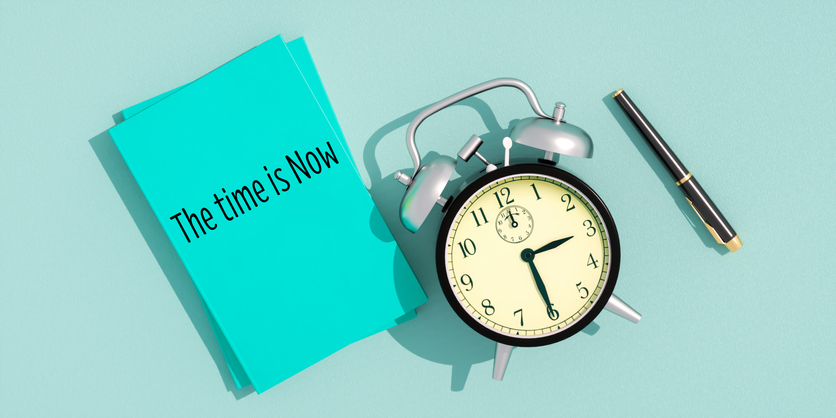.jpg)
Nonprofits rely heavily on contributions made by donors, to realize their intentions (or mission) in actionable ways. In that sense, fundraising helps secure an organization's future impact. This all starts with donors, and how invested they are in your cause and its activities. The question is: how can you replicate past donor success to secure more gifts, not just now, but in the future? The answer is modeling. Let’s explore some insights into modeling, why it’s critical to your fundraising success, and where you can go to gain more wealth insights through WealthEngine.
The Changing Landscape of Fundraising
Thanks to major developments being made in tech and social networks, nonprofit fundraising is rapidly evolving. With the rise of AI and ML, for example, more nonprofits are adopting these technologies to gather data quickly, so they can be more efficient in creating positive change. They are also being used to assist organizations in understanding their donors and prospective donors better and determining how to appeal to them in the future.
In that sense, the need for hyper-personalized engagement is now a necessity rather than a benefit. Since Millennials and Gen Zs are consuming tons of information in small chunks of time, it’s imperative to capture their attention in ways that are personally applicable, so they feel valued as your donors. Millennials’ median annual giving is twice as much as Boomers and Gen Xers at $13,654. Gen Z will also account for 40% of all consumers as of 2020. With their growing influence and increased giving capacity, it’s important to understand how they give and how to connect with them.
Importance of Modeling
The core of successful fundraising lies in the relationships you’ve cultivated and nurtured with your donors. By reaching out to your recurring donors, and encouraging them to give, you’re likely to receive some gifts that will push you towards your goal. But, what if you’ve exhausted your efforts? Let’s say you’ve reached out to every donor in your database. You’ve solicited contributions from the individuals you know have the capacity and propensity to give and you are now left guessing who to reach out to next. That’s where modeling comes in. Models help you understand past donor successes and identify prospects with characteristics in common with your best donors. With predictive analytics and modeling, not only can you find high-net-worth prospects, but you can also find those who closely resemble your best existing donors. You can evaluate their giving history and project their estimated giving capacity— or how much they’re likely to give in the future.
How to Get Started With Modeling
Predictive analytics and modeling, when combined, allow you to gain key insights about your donors and prospects and build confidence in your prospecting efforts. Not only are you able to find prospects who have the greatest propensity and capacity to give, but you can also use models to predict when they'll give and how much. In short: predictive modeling can help you find more donors, predict giving levels, retain your donor base, grow donor commitment, and more.
First, we start with screening your donors. This is to help you understand your existing donors on a deeper level and uncover hidden potential in your database. Through wealth screening, you can attribute wealth ratings and scores and merge them with your contact data, so you get a clearer picture of your donors' lifestyle, demographic, and affinity data. These scores help you identify and categorize (or segment) donors and prospects with the right attributes. So not only are you gaining a general impression of an individual's characteristics and interests, but you are also understanding their wealth. This includes their total assets, net worth, cash on hand, their propensity to give, charitable giving, and more.
Now, you have to analyze your donor data. Remember: forecasting fundraising income accurately helps you reach your major gift fundraising goals. So, before you predict who will give to your organization, it's important to understand what makes your audience unique. What, specifically, about them and their interests do they share, that inspires them to give? Using WE Analyze, you can analyze your screening data and gain a 360-view of your donor base. This gives you a clearer picture of commonalities among your donors, and allows you to tailor your communication with them in ways that are more engaging and personal.
Next comes modeling. After uploading your screening file, you can then create a unique, custom algorithm that will predict who will be most likely to give to your organization. So, in the case of fundraising, the model created will be built on strong indicators of gift giving. These indicators may include: number of events attended, gift capacity, the existence of a family foundation, board affiliations, or other attributes. So, once your information has been analyzed, you'll receive an API response indicating whether or not each of your prospects are likely to give. Your prospects are also prioritized in order of gift capacity and propensity. These rankings and indicators will help you target your fundraising efforts; hone in on donors who have the greatest willingness to give; and approach each of your prospects with highly personalized, tailored messaging.
3 Reasons Modeling Is Critical to Fundraising Success
Not only does modeling help you identify and focus on the donors who have the greatest propensity and capacity to give to your organization, but it also gives you major insights into 3 key areas:
1. Modeling allows you to gain a greater understanding of donor motivations
Since models allow you to identify and evaluate the commonalities among your existing and future donors, you gain a greater understanding of their motivations and behaviors. Which demographic of people give to your organization? Is it women over the age of 50 who own dogs? Or, is it men in their 40s who like to go camping? By analyzing your donors and prospects, and creating a donor persona, you can identify the ways prospects will want to interact with your organization. This will help you bring in more gifts as time goes on, instead of waiting idly by to see if your donors will give.
2. Modeling drives personalized campaigns
Fundraising success comes down to well-timed and optimized asks. The best way to do this is by cultivating and nurturing personal connections with your donors. If some part of their narrative or their experiences are being addressed by your organization, they’ll feel more inclined to give. Why wouldn’t you give to an organization that understands and acts upon your values? Refined donor segmentation, in that sense, helps you tailor your messaging and communication. You can divide your donors and prospects into smaller groups based on their interests or giving ability, and subsequently generate personalized messages that resonate. Not only does this enable you to tailor your messaging, but it also helps you notify donors about experiences that match their interests. This presents them with added incentives to give.
3. Modeling helps you uncover hidden gems
Not only can modeling help you understand which types of donors are most inclined to give to your organization, but it can also identify prospects you may have never thought to approach. Let’s say you’ve based your model on your top 100 donors, but have a list of 5000 constituents. These constituents represent individuals who have contributed small gifts. Although it’s important to learn about the top hundred donors, it’s even more important to compare your model to the 4900 to uncover hidden gems. So, when sifting through those constituents, you can identify which of them closely resemble your best supporters, but who aren’t making major gifts. Even though they have the propensity and capacity to. You can then determine which donors to cultivate and nurture further. So, by focusing on those who have thus far been overlooked, you can get a greater return for the effort.This allows you to deepen relationships with donors who may want to contribute more, but haven’t been inclined to give because they haven’t been presented with the right ask.
Not only can modeling help you target donors and prospects who have the greatest propensity and capacity to give to your organization, it also enables you to tailor your fundraising efforts and outreach to appeal to them best. This will help you develop a loyal community of donors who will give now and in the future.
Boost Your Donor Cultivation Using Models
Not only can we boost your fundraising, but we can help unearth the best donors for you to nurture and cultivate.

.jpg?width=610&name=multi-channel-fundraising-cta-large-request-a-demo%20(2).jpg)
-1.png)

